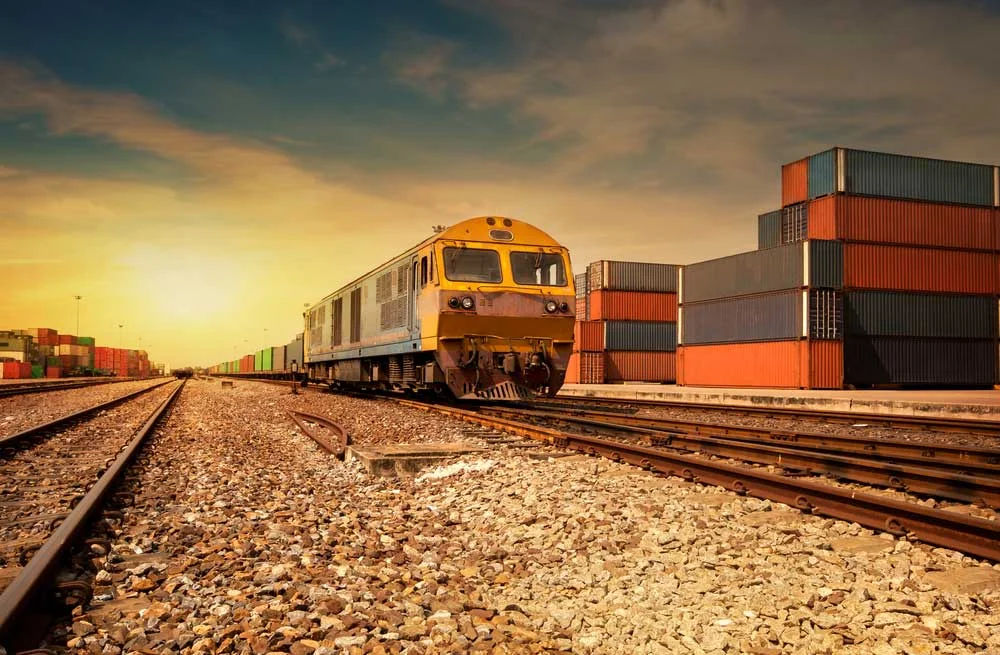



Rail transportation remains the most efficient and cost effective method when it comes to moving large volumes of goods over long distances. In countries with extensive land areas and rail networks like India, China and the United States, freight trains not only haul cargo from origin to destination domestically and help in the development of major industries, they are also a key component of international shipping.

Fruits and vegetables, textiles, etc.
Includes dry bulk like grains, salt, cement, coal and liquid bulk like oil, fuel.
Cargo that cannot be containerized and are loaded or unloaded individually. Machinery, equipment and wooden logs are examples.
Automobiles, oversized cargo, steel pallets temperature-sensitive goods such as perishable foods.
Hazardous goods like crude oil, ethanol, liquified petroleum gas etc. that are are subject to national and international rules and regulations.
A freight train, commonly called a goods train in India, is a group of freight wagons pulled by an engine. Based on the cargo, there are many types of freight wagons.
Hopper: Hopper wagons are designed to transport dry bulk materials such as grains, minerals and cement. They can be either open-top or closed-top depending on the type of cargo.
Gondola: Gondola wagons are open-topped wagons used to transport high-density dry bulk like steel pipes, metal coils or scrap metal. It is lower than a hopper for easier loading.
Container Wagon: It is designed to move shipping containers. Some countries, including India, have double stack container wagons that give great savings on capacity, manpower and energy. Intermodal freight trains move containerised export cargo from inland container depots (ICDs) to ports, say, from an ICD in Gurugram, Haryana, to Nhava Sheva port in Maharashtra. For import cargo, it would be a trip in the opposite direction.
Refrigerated Wagon: Refrigerated wagons also known as reefer wagons, are used for transporting perishable goods such as milk, meat and other food items.
Schnabel Wagon: The Schnabel wagon is a uniquely designed wagon with multiple wheels and lifting arms that carries heavy and oversized cargo. It consists of two lifting arms that suspend the cargo between them.
Box Car: A closed wagon that transports goods that must be protected from the weather. It opens from the sides through one or more doors. It is less used nowadays due to the container waggon.
India has its own way of classifying freight wagons as per standards
Open Wagons: These include box open wagons with high sides and side-loading for bulk cargo like coal and boy open wagons with low sides suitable for carrying iron ore.
Covered Wagons: These come as both single and double-decker wagons and are used to transport automobiles.
Tank Wagons: These are used to carry petrol, petroleum products and kerosene.
Special purpose Wagons: These include milk wagons capable of carrying 40,000 litres of milk at 4 degrees Celsius, aluminium and cement wagons, etc.
In India, transporting freight by rail costs Rs 1.41 per tonne km, compared to Rs 2.58 per ton km via road. Cheaper than road transportation.
Trains are more energy efficient and have a lower carbon footprint than trucks. According to the Indian Railways, rail transport generates 28 gm CO2 per net ton km versus 64 mg CO2 via road.
Trains travel large distances in a short time.
Easy cargo loading/unloading because of large volumes, few packaging requirements.
There is less possibility of cargo damage while in transit.
Better safety record. Cost of road accidents in cargo movement is eight times more than train accidents.
Weather conditions have little impact on rail transport.